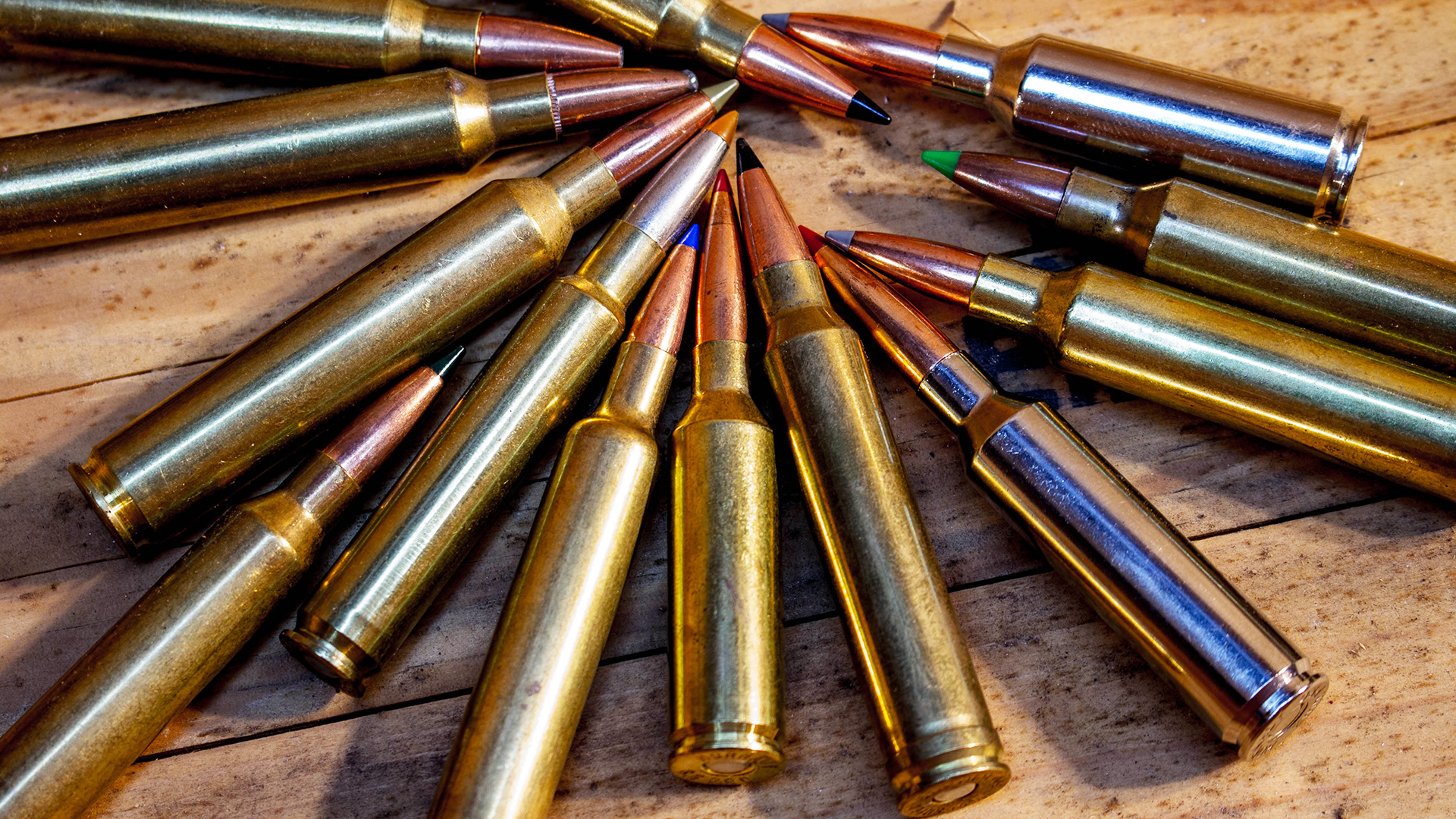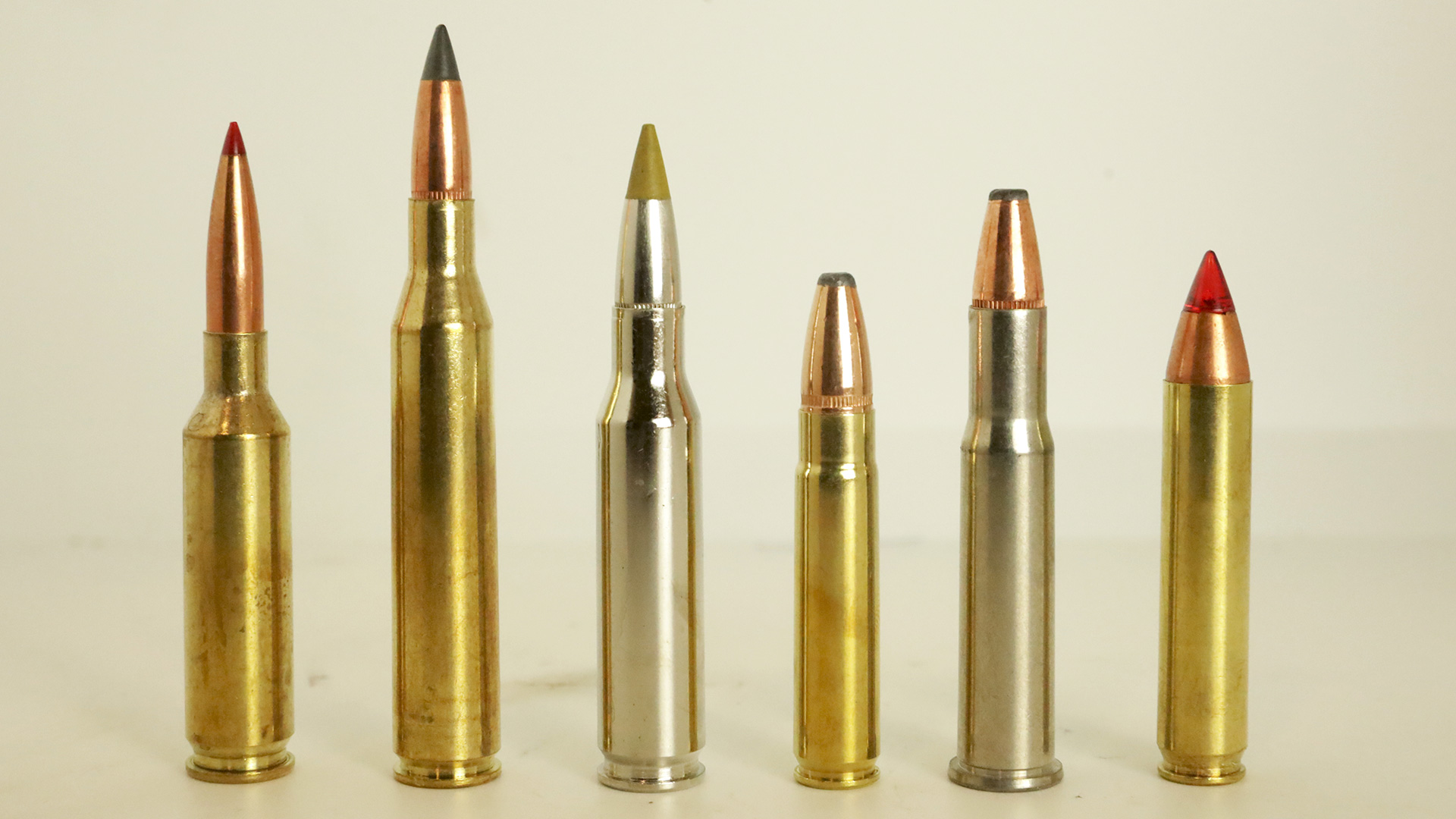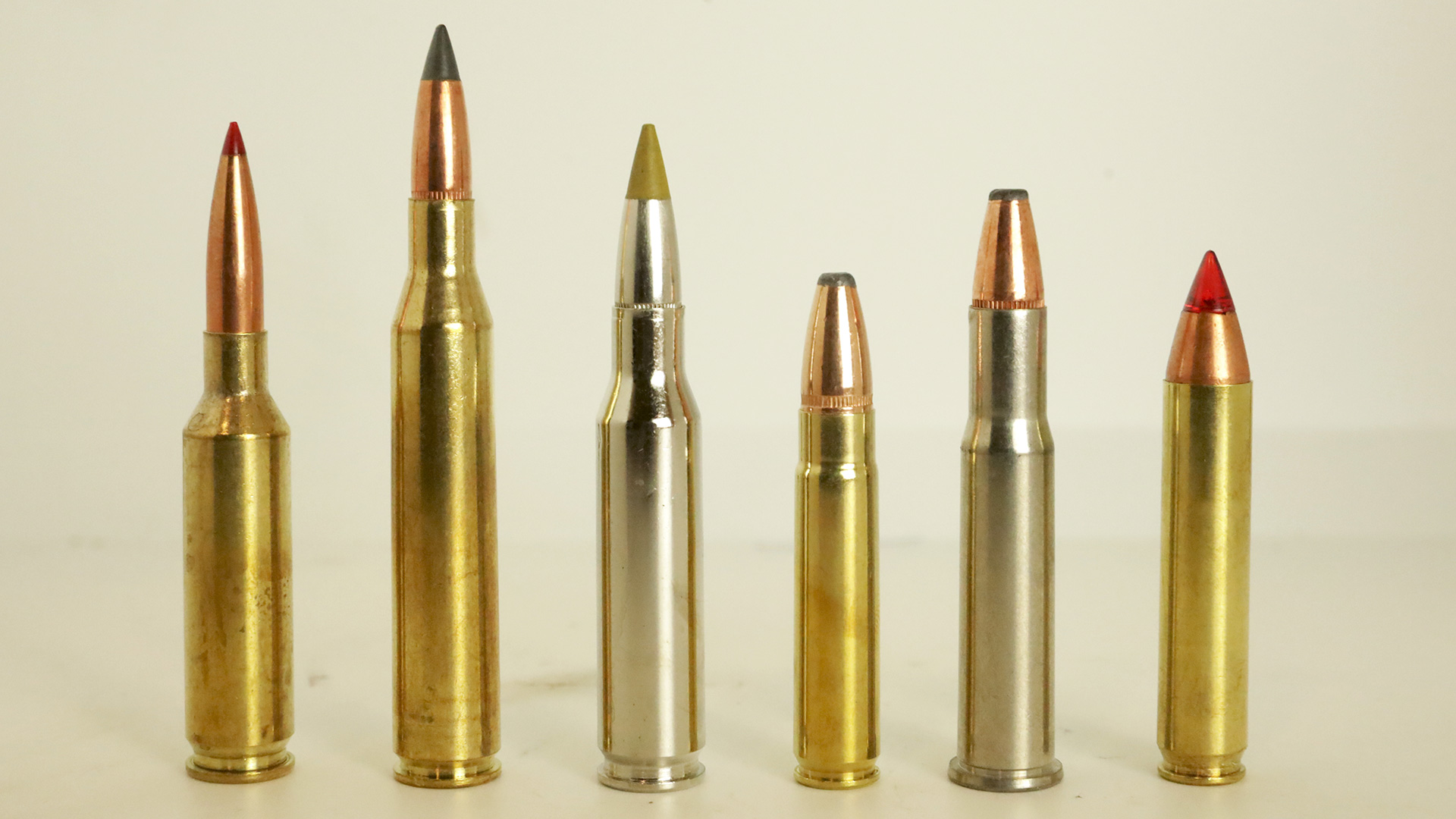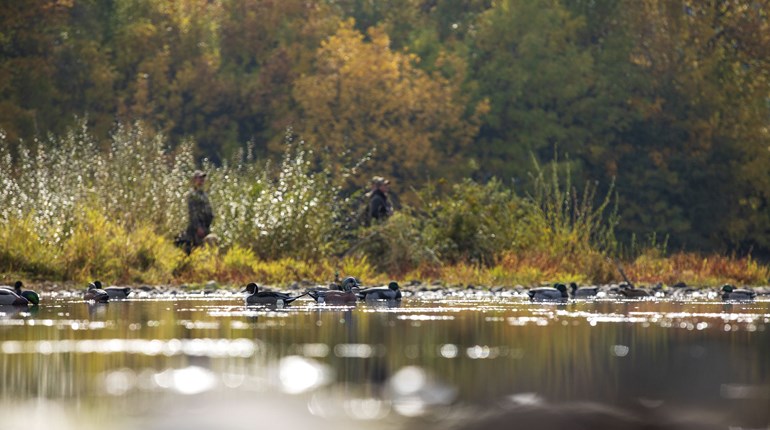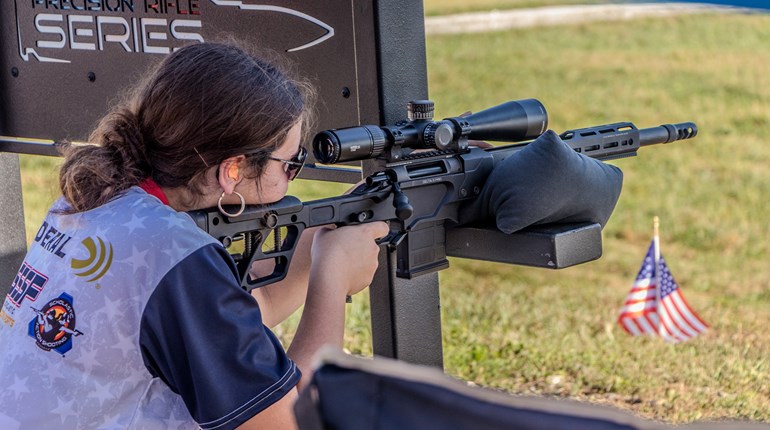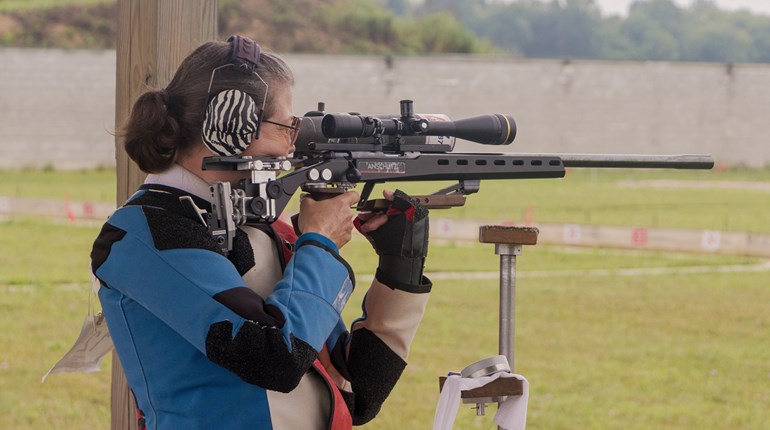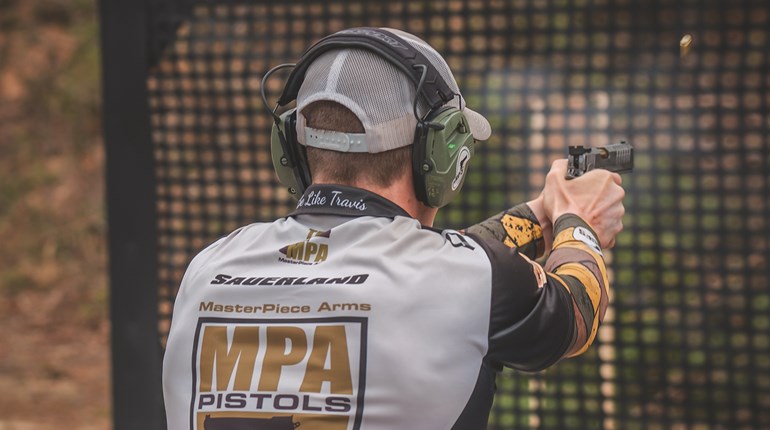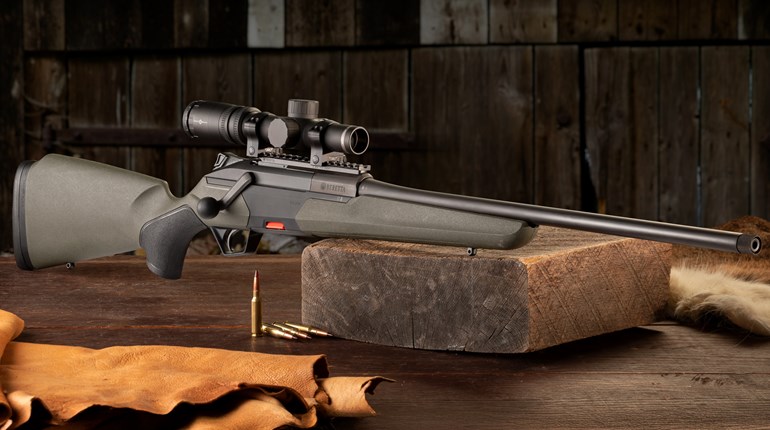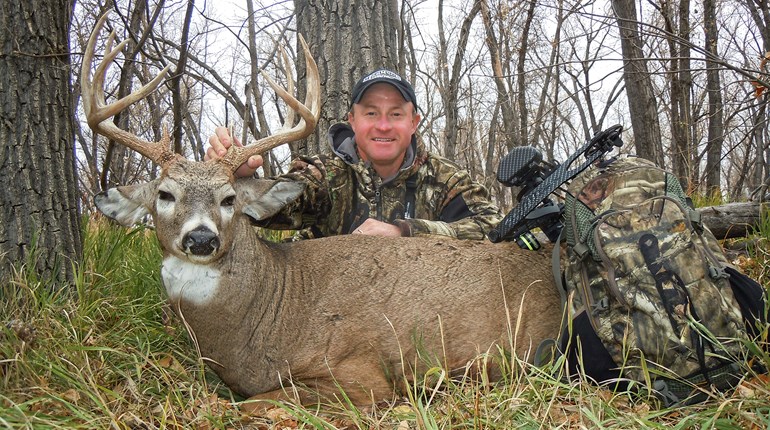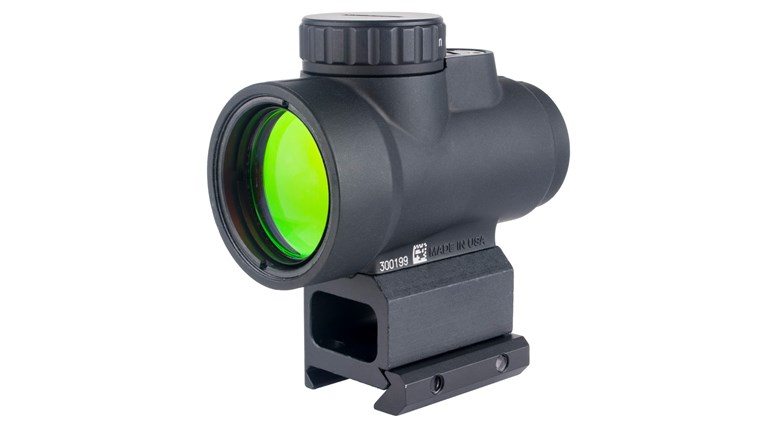
We paused, listening for ducks. The only sound we heard was water dripping off our paddles. Guided by the beam of our headlamps slicing through the thin layer of fog blanketing a slough, we continued on.
Where the slough bottlenecked, honkers and mallards erupted. We could hear them, almost feel them. It was too dark to see. My buddy, Austin Crowson, and I tossed out a dozen floater duck decoys and secured a half-dozen silhouettes to a partially submerged log, one we knew birds were resting on. We tucked into some willows on the opposite shore, waist-deep in water, and waited for daylight.
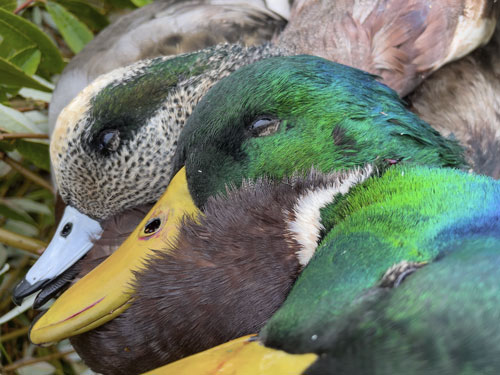
Thirty minutes into shooting light we had only three ducks. We hadn’t missed a shot. “Let’s move back down the slough,” Crowson suggested. I agreed. The action was much slower than anticipated.
Quickly we gathered the decoys and paddled our Marsh Rats a quarter-mile back down the slough, to more open water. I tossed out the floaters while Crowson scattered two dozen silhouettes on an exposed, grassy point. In less than an hour we had a pile of ducks, mostly mallards and wood ducks.
It was opening week. We were right where we wanted to be at first light but with the low river level and tall trees, ducks were reluctant to dive into the confined end of the slough. The move to more open water paid off.
Crowson and I began hunting ducks and geese together five years ago. He’s less than half my age, yet we share the same mindset. He’s a smart hunter who bases his decisions on bird behavior. If birds aren’t finishing he analyzes why, studying decoys, blinds, calling and more. If something’s not right he makes a change, or moves. He doesn’t wait or overthink things.
The early days of waterfowl season can be epic. Then again, they can be some of the most frustrating days if hunting pressure is high. Equipping yourself with the right gear and having the ability to be mobile—and being willing to move—can transform a frustrating day into a great one, maybe even boost success rates throughout the entire season.
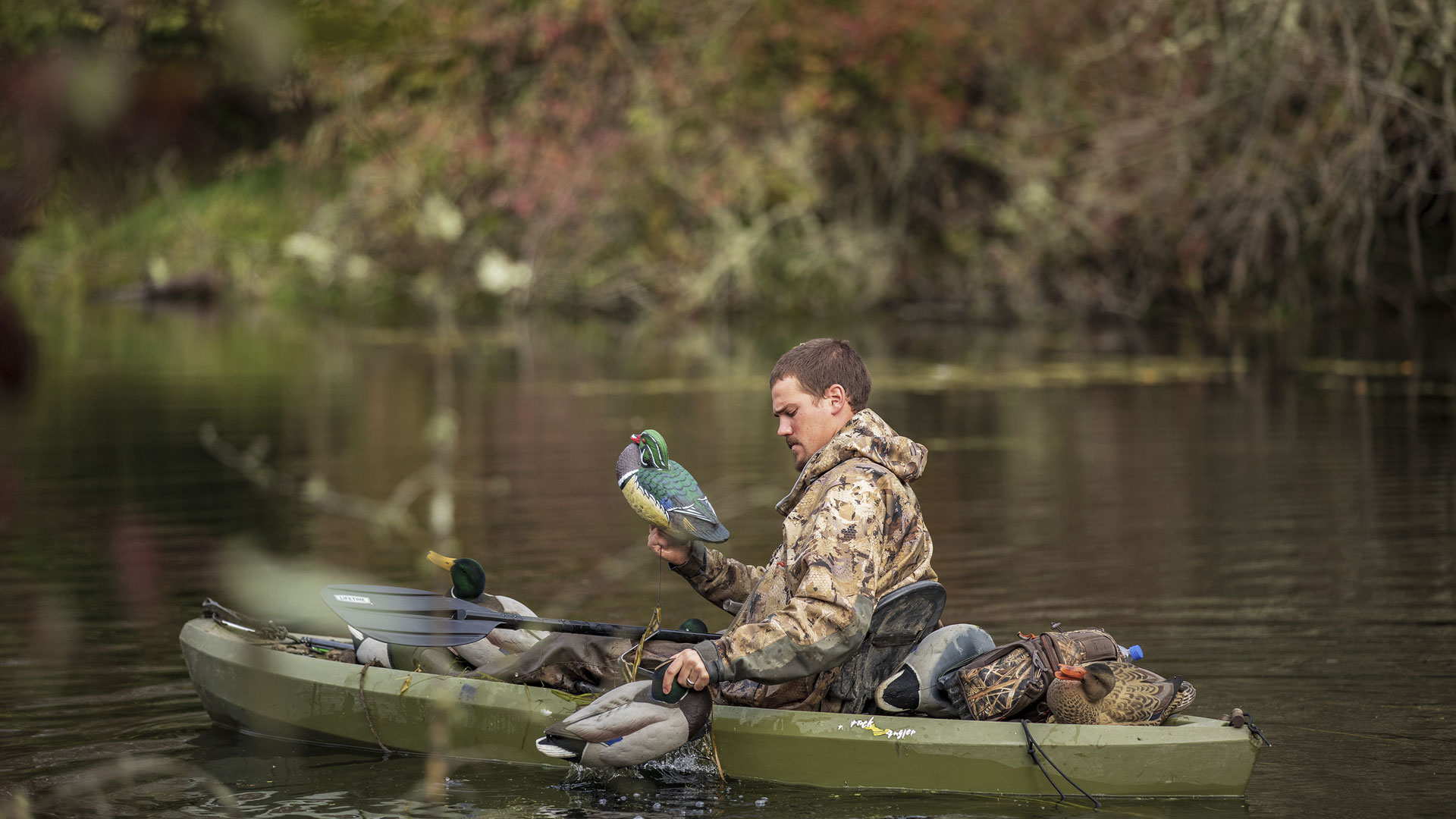
It Starts With Scouting
As in all hunting, scouting offers big benefits to waterfowlers. Scouting reveals where birds are roosting, feeding and the flight paths they use that connect the two areas. It also confirms how many birds are utilizing a certain place at a specific time. Such intel will help pinpoint where to hunt, set decoys and blinds, even pass-shoot.
We can’t be everywhere, so consider using trail cameras to aid your scouting efforts. In the early season, concentrate setting cameras on feeding areas. Low and slowly rising water levels associated with the early season expose a lot of food. Learning where ducks are gathering to feed confirms where to set up.
Cellular trail cameras (in states that allow them) set on video mode reveal timely data. You might see a pair of mallards on camera, but hear dozens feeding out of frame. There may be one wood duck captured in a thumbnail image, but a 15-second video clip might show another dozen birds quickly swimming by. This marks my third season of using Moultrie Mobile cellular trail cameras; I’ll be running more than two dozen for ducks and geese again this season. Every camera is set on high-resolution video mode to optimize the quality of content.
The more details you can get with trail cameras, the better prepared you can be for a hunt. When physically scouting for early-season ducks, we often spook them due to the secluded waters they occupy. They can take days to return. Trail cameras scout without spooking birds.
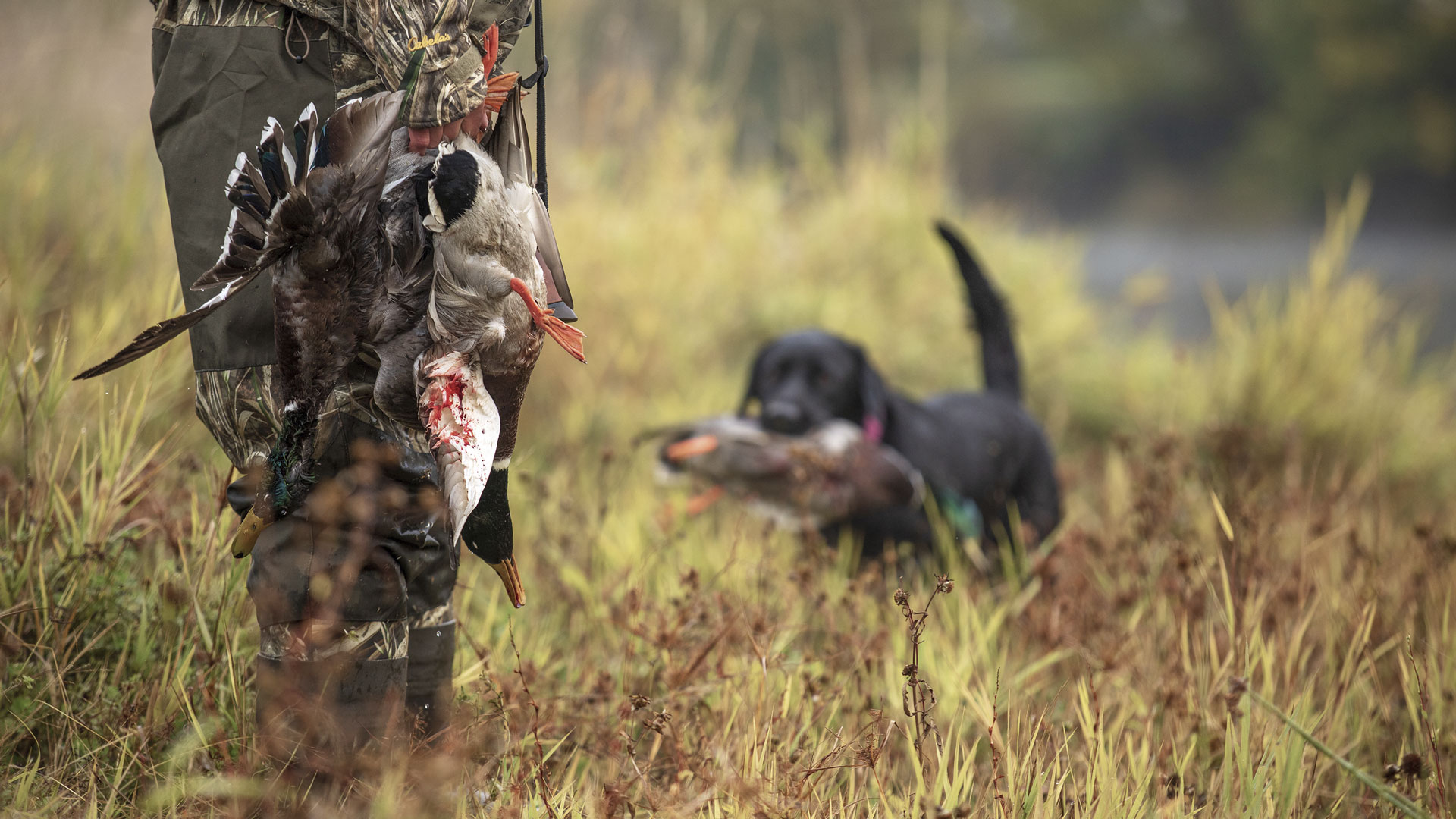
Low-Profile Craft
Marsh Rats will increase your waterfowl hunting opportunities. These little crafts are low-profile, hold enough decoys to create effective spreads and you can anchor them and hunt from them. A Marsh Rat is a sturdy craft that will get you into tight places. It’s easy to hide one in brush and use it to retrieve birds.
In the early weeks of the season, Marsh Rats are nice for navigating river sloughs and slow-moving creeks that are too large to wade. If you’re hunting big lakes, simply tow them behind a big boat then paddle your way to islands or protected shorelines where birds are working.

A kayak is another invaluable duck-hunting tool. While you might not be able to load it with a lot of decoys, there’s always the option of pulling a small craft with decoys in it. I prefer small duck spreads in the early season, and I like going simple. The less gear I have to use, the more mobile I am, the more efficient the setups will be.
Kayaks are great for covering a lot of water, fast. If you have to row a mile up a river slough, or across a big body of water, a kayak is the way to go. Because they’re low-profile and streamlined, kayaks are great for bucking the wind.
Starting in the early weeks and going all season long, buddies and I hunt a lot of creeks. The creeks are small, easy to shoot across, but deep. The bottoms of some creeks are so muddy it’s unsafe to wade in them. Enter a small kayak. Because we walk into most creeks we hunt, we always have a dog for retrieving birds. Having a little canoe that one person can carry or drag serves the purpose of collecting decoys at the end of the hunt—nothing more. Without it, our decoy spreads would be small and relegated to shallow shorelines that are hard for ducks to see. But because we can gather decoys in deep water, it allows them to be set in the middle of the creek, greatly increasing their visibility.
Last season Crowson and I hunted a small creek. We set a trail camera on it and not only discovered mallards and wood ducks swimming and feeding all day but also perching on floating logs. Dozens of ducks would gather on the logs, but the only way we could reach it was in a small kayak. While I tossed out the floaters, Crowson paddled across the creek and hammered staked silhouettes into the logs.
I purchased some circle top landscape fabric stakes, painted them flat black and inserted them in my Big Al’s mallard silhouettes. I also picked up a small hammer to secure the decoys to logs. I like securing silhouettes to downed trees sticking 2-6 feet out of the water, as visibility greatly increases.
If you really want to see how much these pegged silhouettes boost the visibility of your spread, get them in place and paddle away. Looking back, you might see some floaters, but the silhouettes clearly stand out, and that’s what captures the attention of distant ducks. The addition of staked silhouettes has not only increased the number of places we can hunt but it’s resulted in more ducks for the pot.
A small, simple rowboat or pram can also increase your duck-hunting opportunities. It doesn’t have to be fancy. Something that allows you to reach places where ducks are that you can’t get to by walking is all you need.
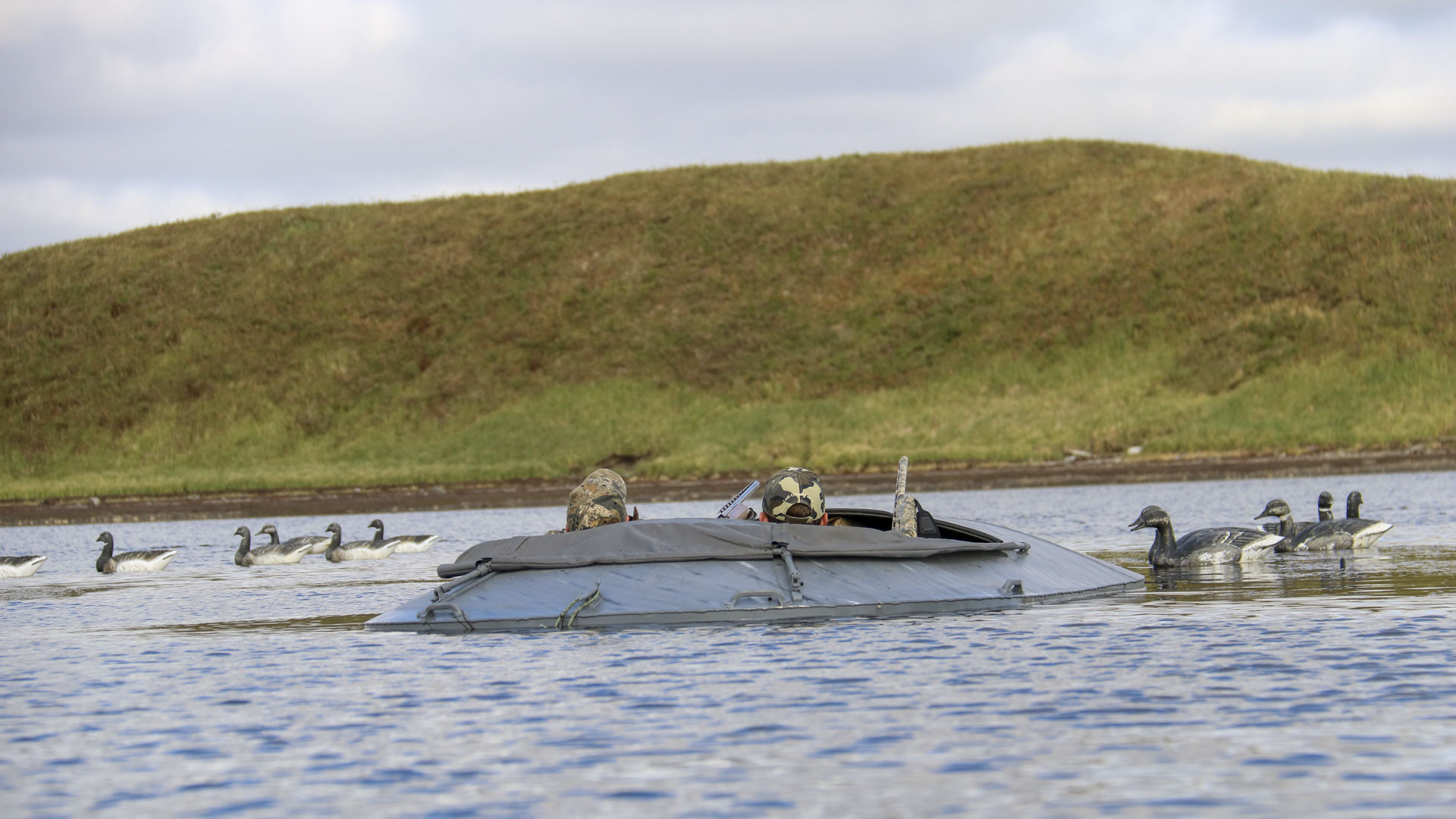
Layouts & Coffin Blinds
Layout boats are most commonly associated with hunting oceans, bays and deep bodies of water for late-season diving and sea ducks. But they can be used in the early season to hunt ducks and geese. I use them a lot for early-season brant and geese in Alaska.
If you’re running big water in a big boat, then having to brush it in or create a blind that results in a high-profile eyesore, consider a layout boat for a blind. If hunting weed beds, near a shoreline where it’s hard to conceal a big boat, tidal flats, even lakes with extended shorelines and no cover, a layout boat might help. On low-water years in lakes, or when hunting low tides far from cover on the shoreline, layouts can help.
Coffin blinds also play a role for hunters in shallow water. Coffin blinds afford mobility and are low-profile. They’re great for hunting waterfowl that come in low to a decoy spread. Coffin blinds are nothing more than a sturdy, plastic shell that you lay in to keep dry, feet typically hanging over the edge. They’re great in sheet water with mud and marshes, and anywhere there’s water where a high-profile blind is hard to situate and hunt from.
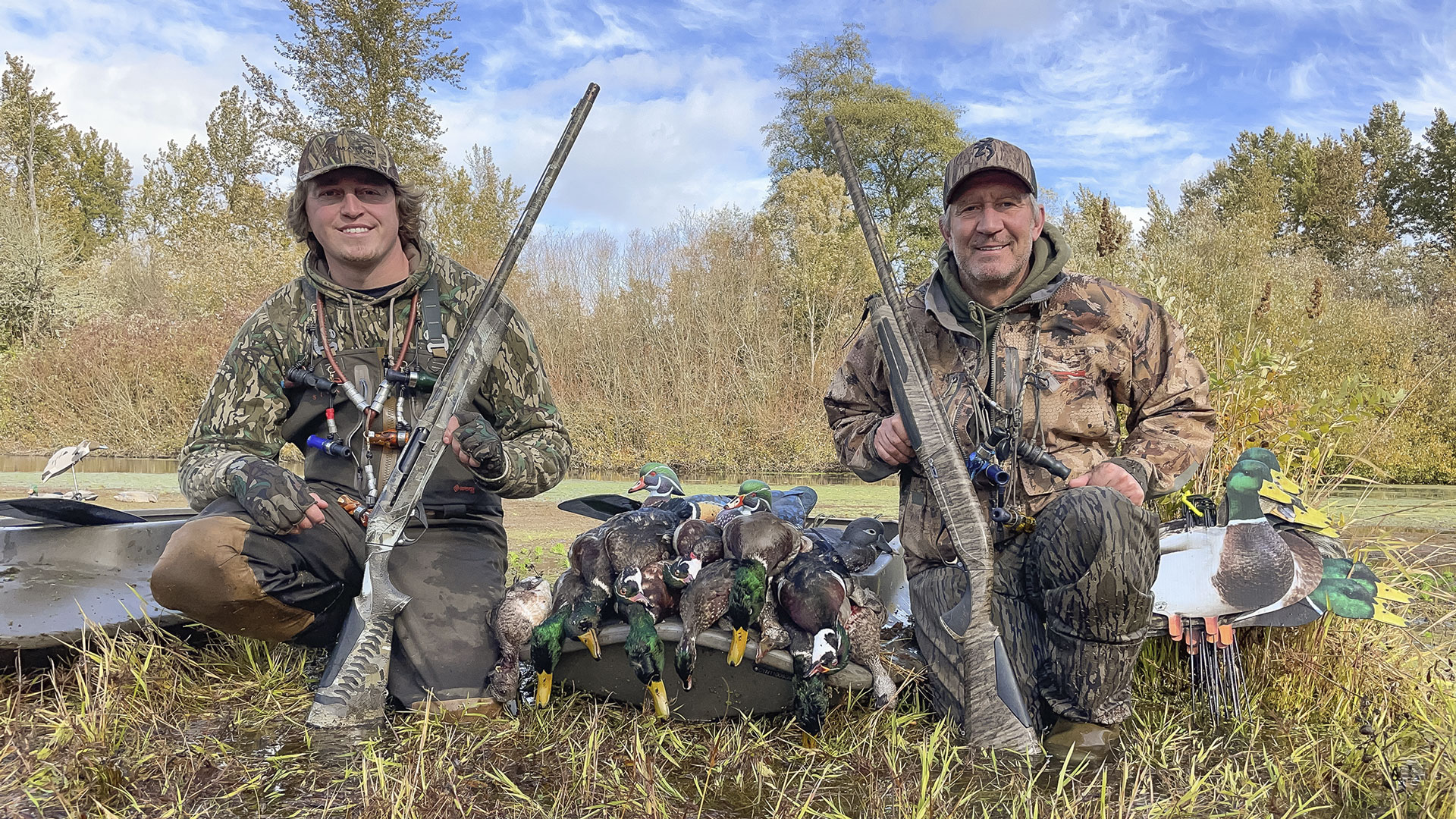
Coffin blinds are commonly used in the mud flats of the Great Salk Lake, but with a bit of imagination they work in other settings. When hunting from coffin blinds, large silhouette decoys can provide the cover. Tall stakes are needed to elevate the decoys above the coffin. Situate the decoys tight around the blind, feathering them out to standard-sized silhouettes on stakes of normal height. Mix in floating decoys on the outside of the silhouettes and you’re set.
Last season Crowson found a spot in the middle of a flooded field that ducks were flocking in to. The grass was bright green and only a few inches tall. There was zero cover. We didn’t have coffin blinds so we decided to use layout blinds. We set them as close to the waterline as possible without getting wet. The blinds were surrounded with 10 dozen tightly packed honker and white-front silhouettes on tall stakes; they hid us well. In front were five dozen duck silhouettes and two dozen floaters. A wing decoy and four floaters on a Motion Duck Shallow Water Spreader jerk cord rounded out the spread (motorized decoys are prohibited in the state we hunted). Four hunters shot limits in short order from this setup, in a place that couldn’t have been hunted any other way.
Last September we had some great early-season goose hunts from layout blinds. Scouting revealed where geese were feeding and from what direction they were coming off the roost. Some of the hunts were in stubble fields where sparse fodder was used to brush in the blinds. Others were along scantily growing fencerows and irrigation lines. Whatever you can do to get closer to the X and still have enough cover on the blind, all while keeping a small footprint, the better the chance of shooting birds.
Decoy Cart
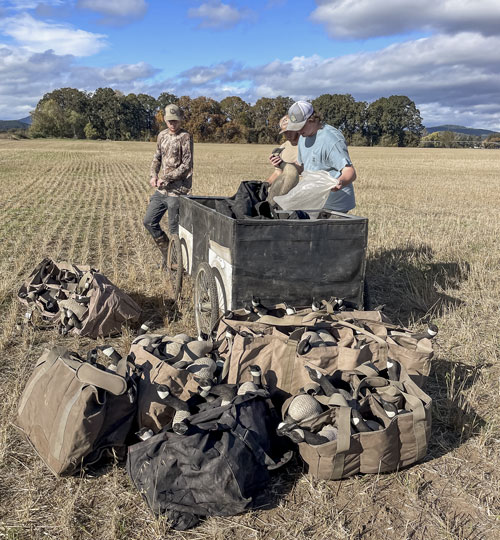
A decoy cart is another valuable piece of gear that’ll help you haul a lot of gear a long way. These can be as simple as a two-wheeled axle with a plastic tub on top, or a small trailer you can pull behind a mountain bike or electric bike. Or you can upsize to a four-wheel model. I’ve tried a lot of decoy carts since I first started chasing ducks in the mid 1970s, and the four-wheel models are hard to beat.
Crowson and his buddies made the cart we use today. It’s four bicycle tires with a large hull that’s sturdy, easy to push and holds a lot of gear. The key to keeping it easy to move, even in mud, is narrow tires. In this cart we can easily fit 10 dozen floating duck decoys, 15-20 dozen silhouettes, along with blinds, guns and blind bags for four people. It’s a game-changer for early goose season in dry fields where we can pile in full-body decoys and layout blinds on top of those.
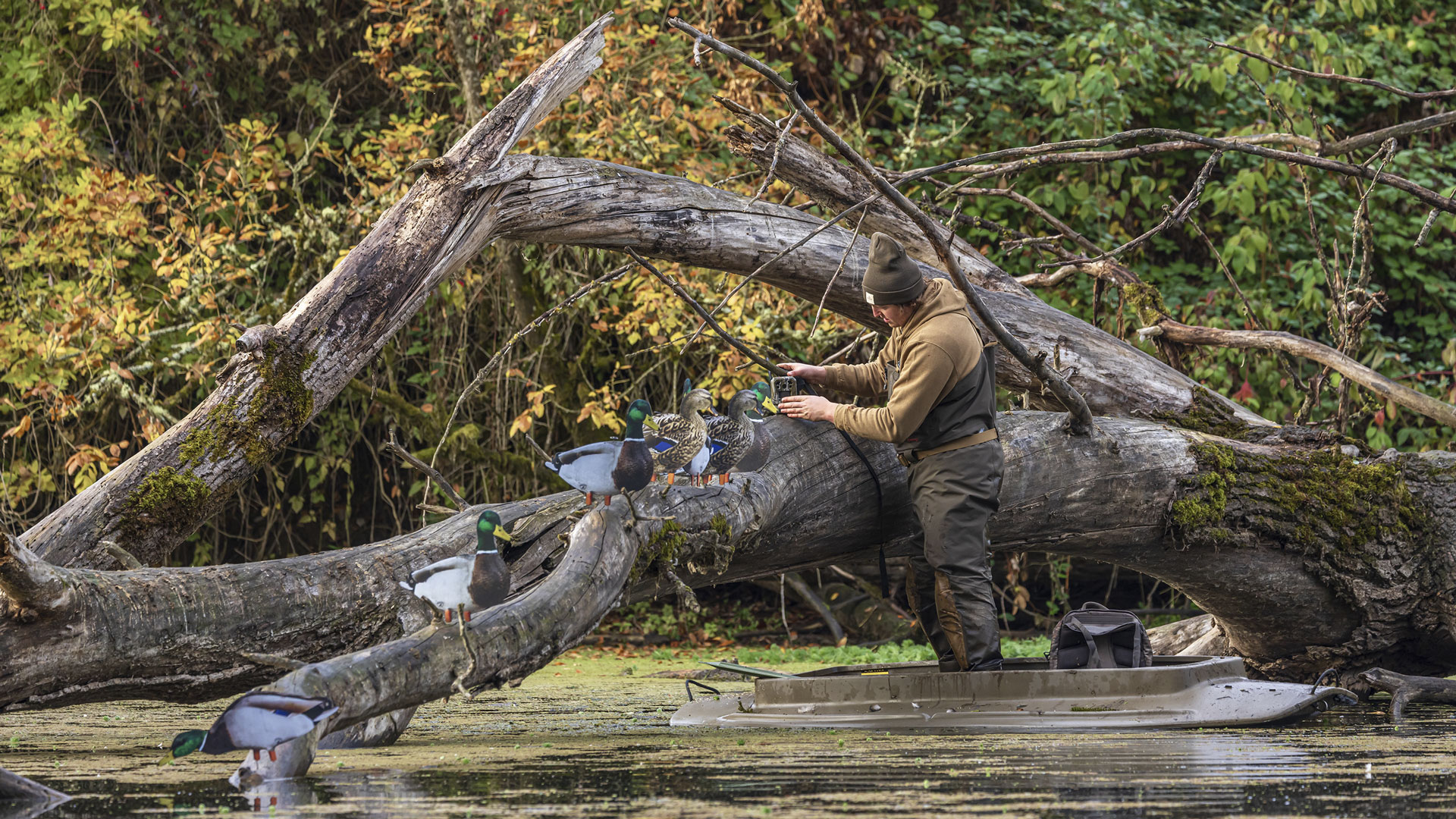
Invest in the Experience
When I was a kid, waterfowl hunting was a simple sport. We used the same decoys all season long. Blinds were created in places birds concentrated throughout the season, but usually we just crawled into the brush and hoped for the best. My old-school approach pales in comparison to how we hunt today.
Now, my early-season waterfowl hunting is based largely on scouting and understanding bird movement. It’s about knowing food sources and how they shift. This is followed by equipping myself with all the gear needed to hunt the range of situations in which I find birds. From there, it’s a matter of being flexible and motivated.
If you lack the means and motivation to put yourself in a situation to kill more ducks, then you’ll remain at status quo. But if you invest in a mix of decoys, blinds and crafts that allow you to access otherwise non-huntable habitats you’ll take your joy of and success in waterfowl hunting to another level. It can get expensive, I know.
What my buddies and I do works.
A half-dozen of us hunt together throughout the season. Each of us has something to offer everyone in terms of places to hunt. Each of us invests in the gear we need to hunt our spots. If we need to increase or upgrade blinds, we pitch in. If we need to expand or change our decoys, we share the costs. By everyone contributing, we can afford the gear we need. We don’t hunt together every weekend, but we share and make do. It works great for all of us, and results in more hunts for everyone, all season long.
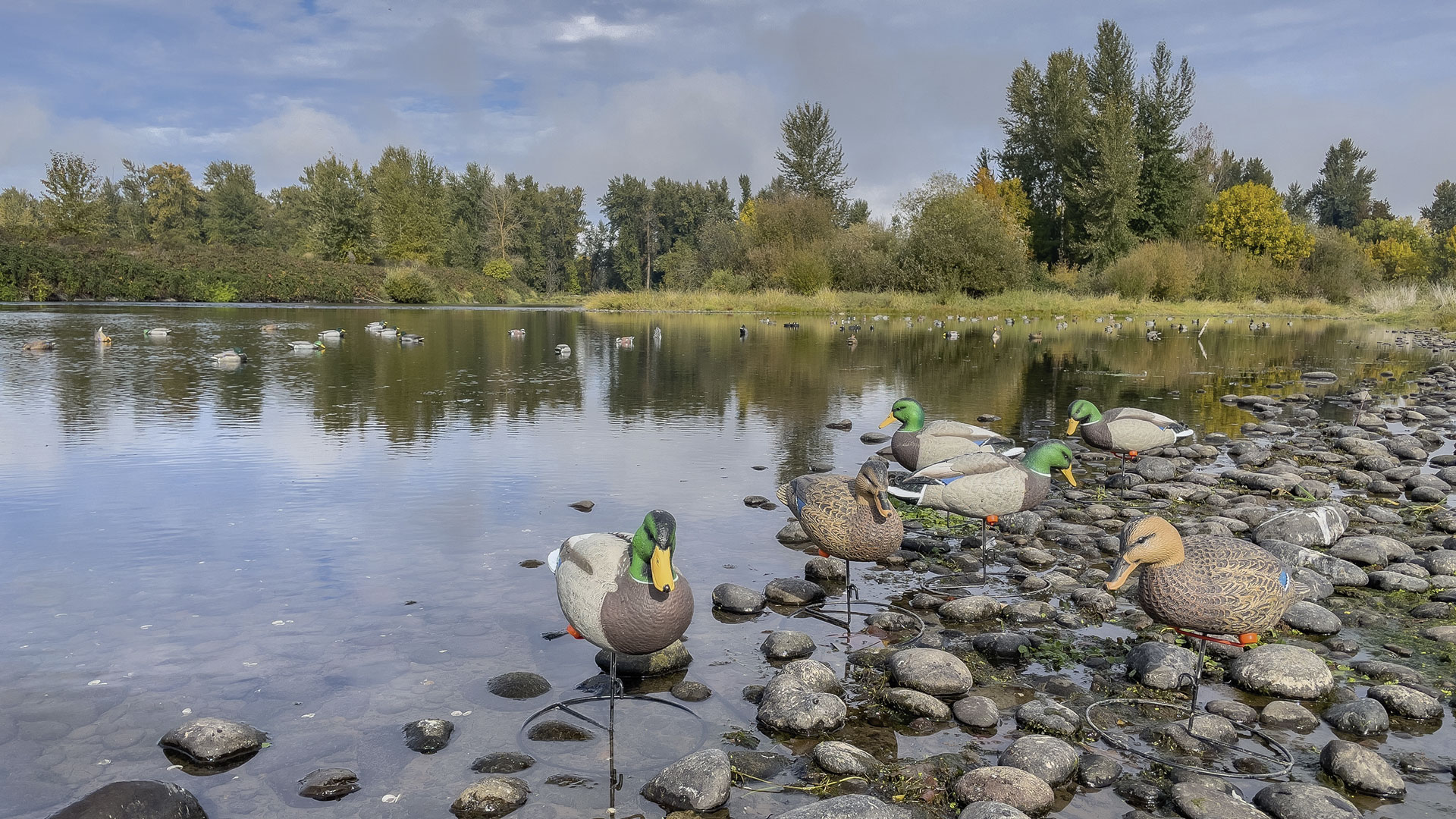
Make A Move
The more gear you have to fit the variety of habitats in your hunt areas, the more hunting you’ll do. But that doesn’t mean every situation will result in success. Sometimes you scout, know exactly where the birds will be, when, and it doesn’t come together. Maybe the wind changed direction. Perhaps a storm front moved in. Maybe fellow hunters got too close. Or, perhaps, the birds simply don’t like what they’re seeing and won’t commit to the decoys. When the predictability of a hunt is overtaken by uncertainty, it’s time to make a change.
The change can be as simple as tucking deeper into the brush, or adding more cover to a blind. It can be a quick fix like making a change in the decoys. Or you might need to totally relocate. Whatever you do, don’t get caught contemplating whether a change is needed. If two flocks of birds flare, something’s wrong. If no birds are showing up as anticipated, a change in locations is needed. If water levels drop overnight and force birds to another area, move.
A few seasons ago I hit the river with three buddies on the opener. We rowed downstream in a drift boat in the dark. We set out three dozen mallard decoys, crafted a makeshift blind from willows on a nearby gravel bar then waited for daylight.
There was a bit of shooting downstream, but little pressure overall. Ducks were flying but not decoying like we’d hoped. We shot a handful of ducks in the first 20 minutes. We went back to the boat and grabbed a few dozen more decoys, nearly half of which were divers. We moved our mallard decoys out a bit, put ring-neck decoys on the outside of the mallards then mixed coots in between. We also set a half-dozen full-body mallards on a little rocky point between our blind and the decoys. We called more aggressively, too. In just over an hour we were gathering decoys, four limits of ducks hanging on our straps.
Another time a friend and I hunted the head end of a slough on opening week. Kayaks got us there. We were nearly a mile from the river channel and there was only room for a half-dozen decoys in the narrow water. Again, ducks flew over but didn’t finish. There was a steady breeze so we put out two windsock decoys. The little addition of motion was all we needed to pull ducks into shooting range.
I used to be a high school science teacher and basketball coach. My classroom walls were adorned with motivational posters. My favorite read, “If you do what you’ve always done, you’ll be where you’ve always been.” That pretty much sums up life … and waterfowl hunting.
